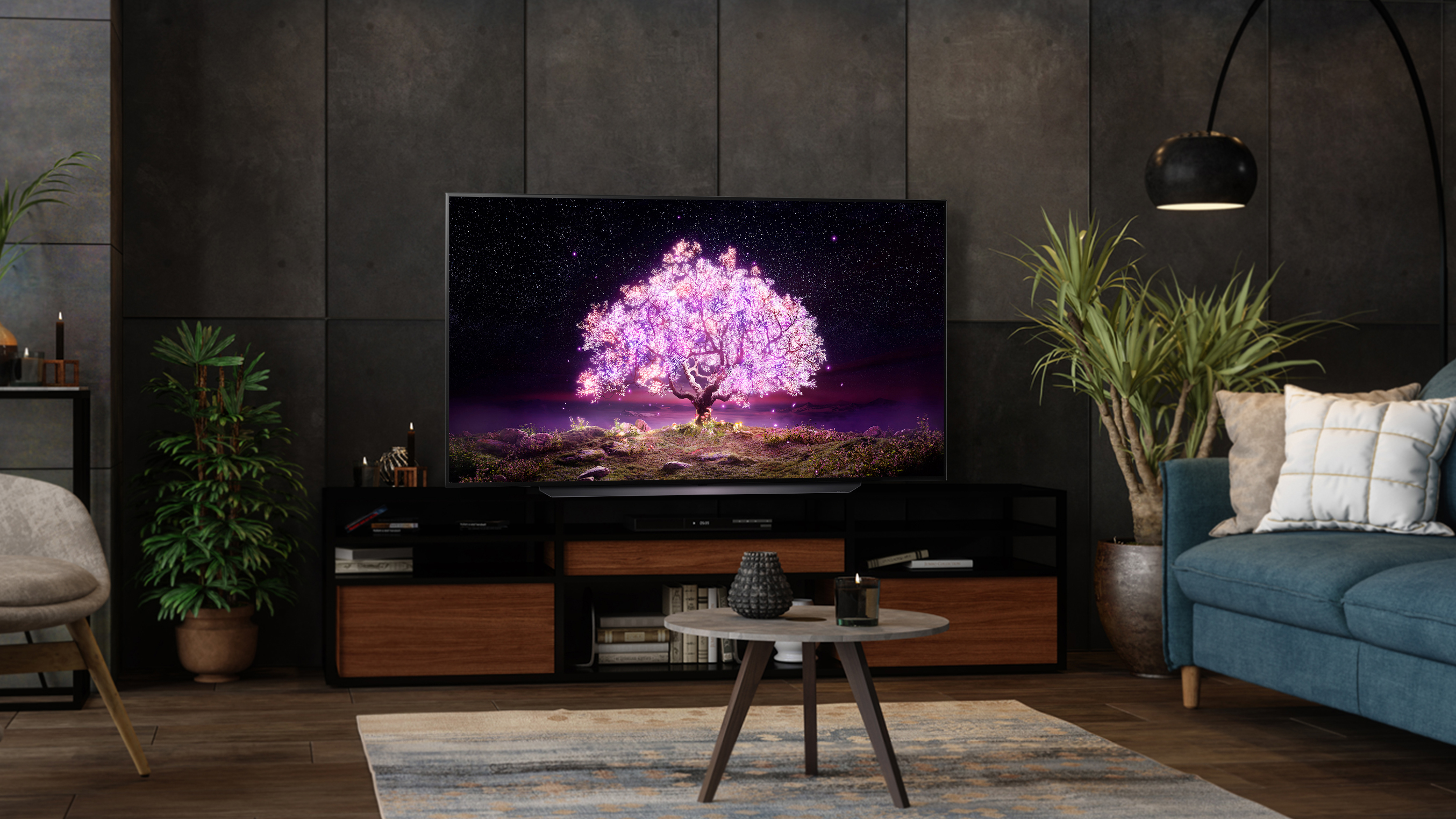LG C1 OLED vs LG G1 OLED: what's the difference?
The LG C1 OLED and LG G1 OLED are set to be two of the best picks for an OLED TV in 2021. Building on the runaway success of last year's CX OLED, and the introduction of the more design-minded Gallery Series OLED, there's little reason to think these new models will do anything but improve on what's come before.
Both the LG C1 and LG G1 are 4K TVs with OLED panels, support Dolby Vision HDR, and come with the latest iteration of LG's webOS smart platform: a great starting point for any television.
However, if you're trying to choose between LG's top 4K OLEDs, there are a few key differences worth considering – not least the price, with the LG G1 seeing a sharp uptick in cost according to the US pricing we've seen so far.
But does the Gallery Series OLED really offer that much more than the LG C1, and does its new 'OLED evo' technology really make that much of a difference to the picture quality of the set? We'll delve into everything you need to know below.
LG C1 vs LG G1: price and sizes
Of course, you'd need to be in a favorable financial position to be able to pick and choose out of preference alone. The LG G1 OLED is a very pricey television, though the US pricing we have so far isn't quite as high as expected.
For the LG G1, you’re looking at $2,200 / £1,999 (around AU$3,000) for the 55-inch model (OLED55G1PUA), or $2,999 / £2,999 (around AU$4,000) for the 65-inch OLED65G1PUA. A 77-inch model is retailing for $4,499 / £4,799 (around AU$6,000) too.
Surprisingly, this year's model is considerably cheaper: the 65-inch GX retailed at $3,499 / £3,199 / AU$5,999, so we're seeing a 15% drop in RRP for the G1 at the same size.
The LG C1 OLED is even cheaper, though, matching the launch pricing for the LG CX's various sizes last year. It starts at $1,499 / £1,699 (around AU$2,999) for a 48-inch size – while the 55-inch model costs $1,799 / £1,699, the 65-inch costs $2,499 / £2,499, and the 77-inch costs $3,799 / £4,499.
The main difference is that there's also a new 83-inch size for the LG C1, topping out at $5,999 / £6,999 (around £4,400 / AU$8,000). It's only confirmed for the LG C1 in LG's 2021 range (though there is an 83-inch version of the Sony A90J), so anyone after a truly massive 4K OLED will need to opt for the C Series here.

LG C1 vs LG G1: OLED evo explained
This is probably the most important distinction to understand, as it's a new one for 2021. The LG G1 Gallery Series OLED will feature an 'OLED evo' panel technology to help enhance brightness – one of the few weak spots for OLED TVs.
LG isn't the only TV brand cottoning on to the need for improvement in this area, either. Sony is hoping its Cognitive XR processor is able to eke out more brightness from its OLED screens – while new Samsung TVs continually boast thousands of nits brightness through its competitive QLED tech.
LG C1 vs LG G1: design and specs
One of the big differences is how you'll end up mounting these televisions. The LG C1 comes with a central TV stand, but it can also be wall-mounted. The LG G1 is explicitly geared towards wall-mounting through, with a slim design intended to sit flush against a wall. There is, as of 2021, a new Gallery Stand tripod option if you don't have wall space or a counter to hand, and which can be used for the 55-inch and 65-inch sizes for both sets.
The LG C1 and LG G1 share a lot of the same specifications, including this year's a9 Gen 4 AI processor. LG claims its new chip will use deep learning to better analyze discrete objects onscreen, meaning people, backgrounds, and sections of text are all properly distinguished from each other.
Both sets will pack in four HDMI 2.1 ports, like last year's models, so you’ll get support for 4K/120Hz for optimal settings on the PS5 and Xbox Series X. You'll also get support for HDR10, HLG and Dolby Vision, leaving out HDR10+ (which LG doesn’t support yet) and DTS:X (which LG dropped a few years back).
LG has been actively courting gamers in the past couple of years, and the benefits can be seen in its embracing of VRR (variable refresh rate) and ALLM (auto low latency mode), as well as Nvidia G-Sync and FreeSync for those wanting to reduce screen tearing when connecting a gaming PC.
Both sets feature an acceptable 40W of built-in audio in a 2.2 channel sound system with Dolby Atmos. We found last year's models a bit heavy on the bass, and those after a better audio experience should probably opt for a separate soundbar, but it's a good starting point at least.

LG C1 vs LG G1: conclusion
While the LG CX and LG GX were a bit hard to differentiate, with largely the same specifications and sizes, their 2021 successors have only created a larger divide between the C Series and G Series.
The LG G1's OLED evo tech makes it the go-to option for a premium LG OLED TV, one that ups the brightness over the C1, or will look best when attached flush against a wall.
The G1 is a bit more limited in sizing though, and those of you hankering after a 48-inch OLED TV or, at the other end of the spectrum, an 83-inch OLED, the LG C1 is going to be your best bet. Let's not forget that it'll cost around half the amount for the same sizing options too.
- Read our best LG TV guide for sets you can buy today
Contributer : Techradar - All the latest technology news https://ift.tt/3cmeqqy

 Reviewed by mimisabreena
on
Friday, June 25, 2021
Rating:
Reviewed by mimisabreena
on
Friday, June 25, 2021
Rating:















No comments:
Post a Comment